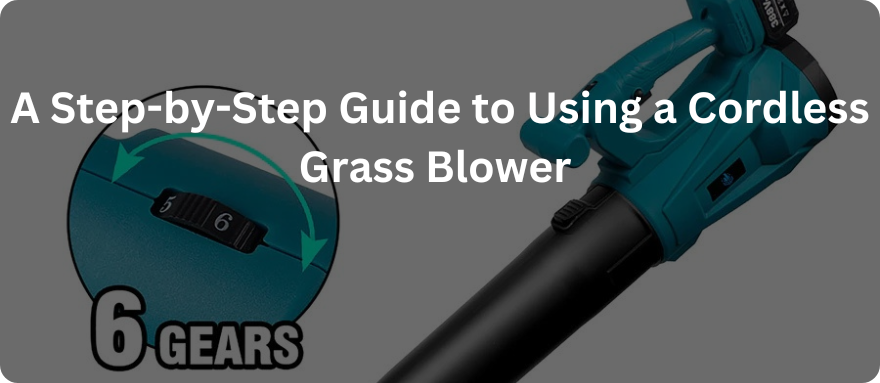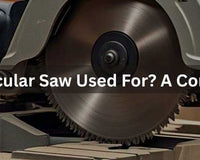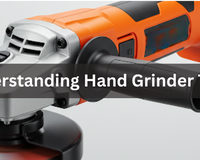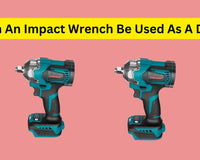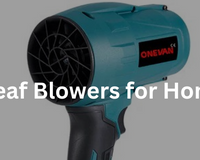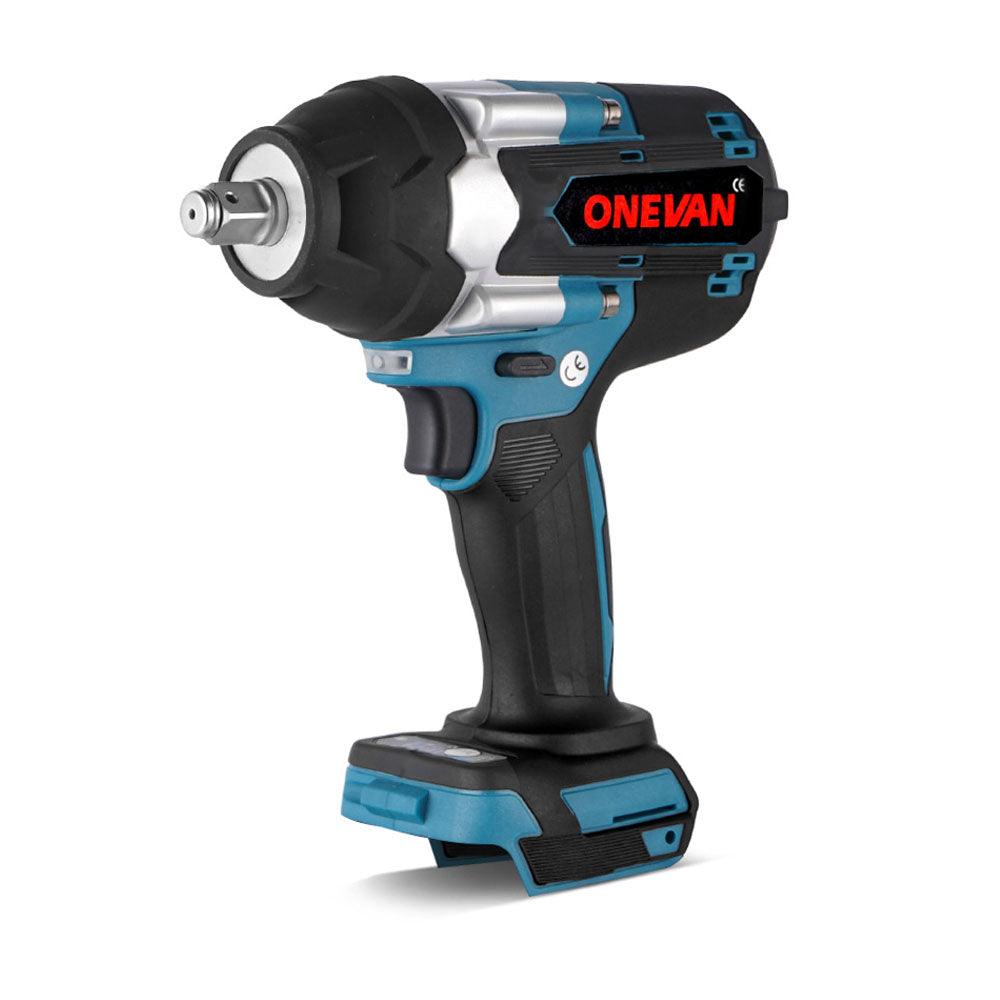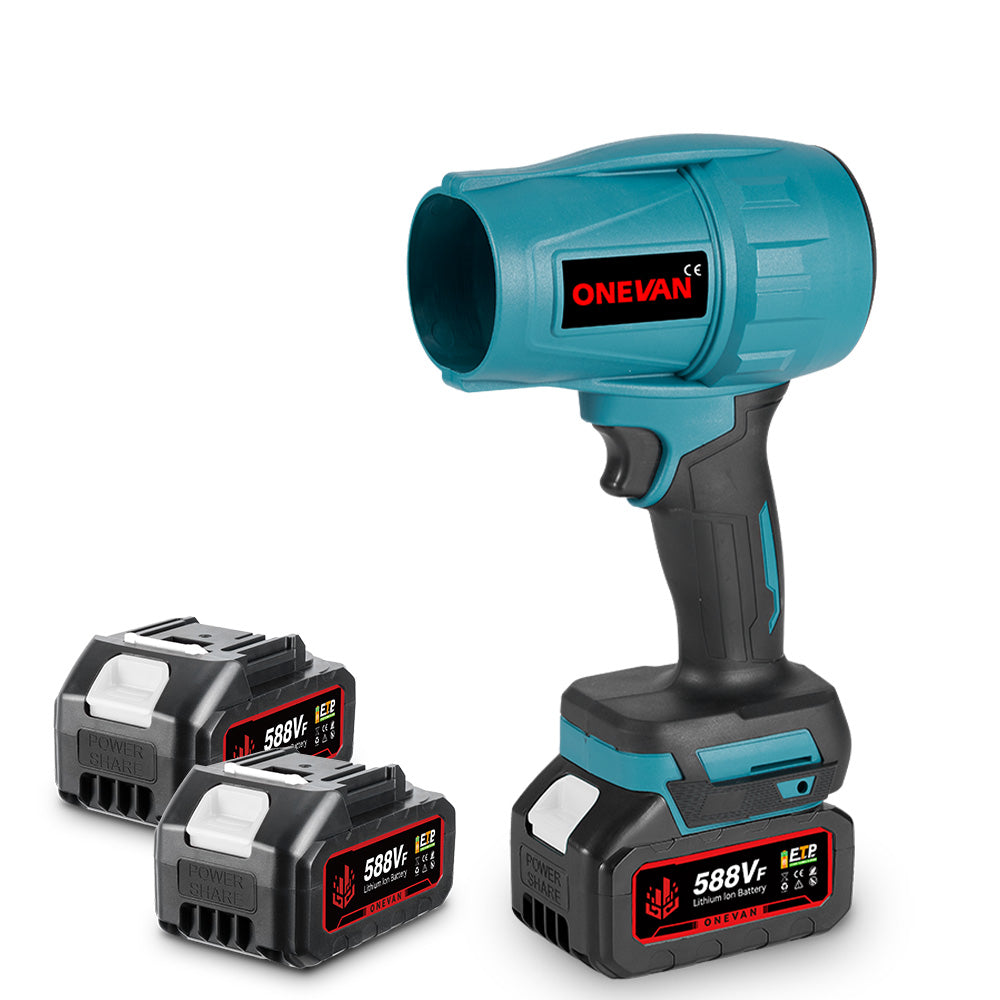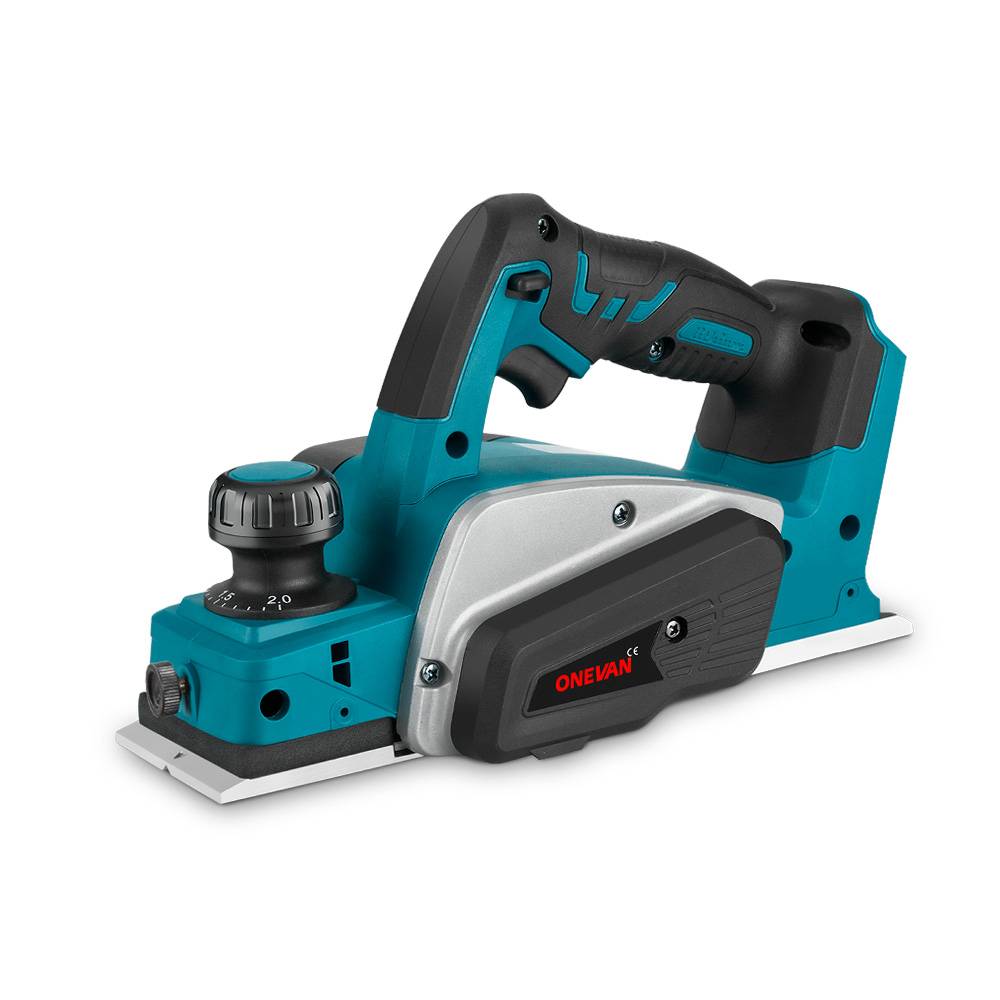Cansado de lutar contra folhas e detritos que tomam conta do seu quintal? Um soprador de grama sem fio é a sua chave para uma limpeza rápida e completa. Vamos mostrar como usá-lo como um profissional, passo a passo.
Da preparação do seu quintal à técnica perfeita de sopro, temos dicas práticas para ajudar você a ter uma área externa organizada sem muito trabalho. Abordaremos tudo o que você precisa saber, incluindo importantes diretrizes de segurança e como manter seu soprador funcionando perfeitamente.
Então, se você é um profissional de jardinagem ou apenas faz tarefas de fim de semana, prepare-se para mudar a maneira como você cuida do seu jardim.
1. Benefícios de usar um soprador de grama sem fio para limpeza de jardins

Portabilidade e conveniência
Pense bem: chega de tropeçar em fios ou ficar limitado pela tomada. Sopradores de grama sem fio são sinônimo de liberdade para se movimentar por todo o seu quintal sem complicações. Você pode alcançar facilmente cantos apertados e o fundo do jardim sem arrastar um fio atrás de você.
Facilidade de uso
Sopradores de grama sem fio são uma boa alternativa aos monstros pesados movidos a gasolina. Isso significa menos esforço nos braços e nas costas, tornando o trabalho no quintal muito mais agradável. Além disso, são fáceis de ligar – chega de puxar fios teimosos.
Operação silenciosa
Esqueça aqueles sopradores de gás barulhentos que incomodam seus vizinhos e familiares. Os modelos sem fio são significativamente mais silenciosos. Você pode limpar seu quintal de manhã cedo ou no final da tarde sem incomodar ninguém.
Ecológico
Sopradores de grama sem fio são uma opção mais ecológica. Sopradores a bateria funcionam com baterias recarregáveis, o que reduz a pegada de carbono. É um pequeno passo, mas faz a diferença para o meio ambiente.
Baixa manutenção
Não há trocas de óleo e ajustes de motor complicados em sopradores de grama sem fio. Com um soprador de grama sem fio, você limpa e carrega a bateria na hora certa. É simples assim.
Início instantâneo
Você não precisa esperar horas para que um motor problemático dê partida. Basta apertar um botão e você estará pronto para usar esta ferramenta elétrica sem complicações. Um soprador sem fio ajuda você a fazer uma limpeza rápida.
Versatilidade
Você pode usar um soprador alimentado por bateria para:
- Limpe as calçadas após uma tempestade
- Remova a grama cortada do seu pátio
- Dê uma rápida repaginada no seu deck antes da chegada dos convidados
E sim, não se esqueça da sua garagem! Um soprador de grama sem fio pode remover toda a poeira e teias de aranha que se acumulam nos cantos. É realmente uma ferramenta multifuncional que economiza muito tempo.
2. Escolhendo o soprador de grama sem fio certo para limpeza de quintal

Potência e desempenho:
Imagine só: quanto mais potência tiver o seu soprador, melhor você se sentirá ao tentar soprar folhas molhadas ou qualquer outro tipo de sujeira pesada. Por exemplo, se você tem um quintal grande ou muitas peças de trabalho difíceis de limpar, precisa de um soprador com alta "velocidade" e "volume de ar". Isso lhe poupará muitas horas de trabalho em frente ao computador e outros recursos.
Duração da bateria e tempo de carregamento:
Ninguém quer que seu soprador pare de funcionar no meio do trabalho. Em média, a maioria dos sopradores sem fio tem uma bateria de reserva de aproximadamente 20 a 40 minutos de consumo de energia com uma única carga. Se o seu quintal for ainda maior, seria ideal comprar outras baterias com maior duração. Algumas até permitem a troca das pilhas durante o uso, para que você não precise esperar para recarregar.
Peso e ergonomia:
Além disso, você não quer se sentir como se tivesse ido à academia depois de usar o seu soprador. Em termos de ergonomia, tente encontrar modelos que não sejam muito pesados para que você possa usá-los por algum tempo entre os intervalos. Às vezes, até mesmo pequenas melhorias no design, como alças acolchoadas ou alças ajustáveis, podem beneficiar muito o usuário.
Nível de ruído:
Se você trabalha cedo ou tem vizinhos por perto, precisará de um soprador menos barulhento. Os sem fio também são muito menos barulhentos do que a maioria dos a gás; vale a pena verificar a classificação em decibéis, pois o ruído alto é intrusivo.
Durabilidade e qualidade de construção:
Um bom soprador deve ser durável e durável. Procure modelos feitos de materiais resistentes que suportem o uso regular e diversas condições climáticas, incluindo chuva e calor. Confira avaliações online para ver como diferentes marcas se comportam ao longo do tempo.
Versatilidade e recursos:
Alguns sopradores têm recursos extras interessantes. Você pode ajustar a potência para diferentes tarefas, como soprar folhas de flores delicadas ou limpar uma entrada de veículos molhada. Alguns podem até sugar detritos ou triturar folhas para fazer composto. Pense no uso que você fará e nos recursos extras que deseja.
Orçamento
Mais barato nem sempre é melhor. Sempre há o custo adicional de um bom soprador, mas o fato é que ele durará mais e terá um desempenho melhor. Nunca vá às compras sem ter em mente o valor específico que pretende gastar. Alguns aparelhos vêm com baterias e carregadores inclusos na embalagem – o que é sempre uma vantagem para você!
3. Guia passo a passo do soprador de grama sem fio para limpeza de jardins
Comprar um soprador de grama sem fio pode facilitar significativamente a limpeza do seu quintal. Aqui está um guia passo a passo detalhado para ajudar você a aproveitar ao máximo seu soprador a bateria.
Etapa 1: Configurando o soprador
Anexar componentes necessários
Antes de começar, certifique-se de que todas as peças do soprador estejam montadas corretamente. Isso normalmente inclui a fixação do tubo do soprador ao corpo principal. Certifique-se de que tudo esteja encaixado com segurança para evitar problemas durante a operação.
Instalar a bateria
Após a montagem do soprador, insira a bateria. Verifique novamente se ela está totalmente carregada para evitar interrupções. Deslize-a para dentro do compartimento da bateria até ouvir um clique, indicando que ela está travada. Verifique se o nível da bateria é suficiente para a finalidade desejada.
Etapa 2: Ligando o soprador
Ligar
Para começar a usar o soprador, localize o botão liga/desliga, geralmente na alça. Pressione e segure para ligar o aparelho. Alguns modelos podem ter um interruptor de segurança que precisa ser acionado primeiro.
Familiarize-se com os controles
Reserve um momento para entender os controles do seu soprador. A maioria terá ajustes de velocidade e, possivelmente, um recurso de turbo para potência extra quando necessário. Saber como ajustar essas configurações ajudará você a trabalhar com mais eficiência, dependendo da tarefa em questão.
Etapa 3: Técnicas de sopro
- Ao soprar folhas
- Crie leiras: use movimentos amplos para reunir as folhas em fileiras longas, o que facilitará sua coleta posterior.
- Formar pilhas: depois de formar leiras, concentre-se em soprar as folhas em pilhas para facilitar o descarte.
- Sopro direcional: sempre sopre as folhas alinhadas com a direção do vento para minimizar a dispersão e maximizar a eficiência.
- Ao limpar aparas de grama
- Calçadas e entradas de veículos: ajuste o soprador para uma potência média para remover com eficiência os recortes de superfícies duras sem danificá-los.
- Sopro de bordas: comece soprando os recortes para longe das bordas e bordas e, em seguida, trabalhe para limpar as áreas centrais.
- Ao limpar detritos de canteiros de flores
- Configurações de velocidade mais baixas: use uma configuração mais suave para evitar perturbar plantas delicadas ou cobertura morta.
- Sopro preciso: segure o bico próximo ao chão para melhor controle e evitar que detritos voem.
- Ao remover sujeira de pátios e decks
- Movimento de varredura: mova-se em um padrão de varredura para remover sujeira e pequenas partículas de forma eficaz.
- Evite danos: mantenha o bico alguns centímetros acima das superfícies para evitar arranhões ou danos.
- Ao limpar calhas
- Use um bico estreito, se disponível, direcionando o fluxo de ar para as calhas para remover folhas e detritos de forma eficaz.
- Secagem de superfícies molhadas
- Após a chuva, use seu soprador para secar pátios ou calçadas rapidamente, ajudando a evitar escorregões ou quedas.
- Ao inflar decorações de jardim
- Se o seu modelo tiver configurações de velocidade variável, use-as para inflar decorações sazonais facilmente, sem inflar demais.
- Ao limpar móveis de exterior
Veja como você pode usar seu soprador movido a bateria para dar um toque especial aos seus móveis de jardim:
Prepare a área: Ao começar, olhe rapidamente para a esquerda e para a direita ao redor dos móveis que você vai organizar. Certifique-se de limpar a área de quaisquer objetos que possam ser facilmente apanhados pelo soprador. Podem ser vasos de flores, brinquedos ou qualquer coisa que não tenha um pino ou âncora para mantê-la firmemente no lugar.
Comece com uma brisa suave: ligue o soprador na rotação mais baixa possível. Você não quer pulverizar tudo para longe dos seus móveis, apenas limpá-los, removendo poeira e partículas soltas.
Trabalhe de cima para baixo: comece fotografando os tampos das cadeiras, mesas, etc. Em seguida, mova-se ao redor e sobre o prato, certificando-se de atingir todos os cantos e espaços.
Vire almofadas e guarda-sóis: certifique-se de levantar as almofadas ou guarda-sóis e soprar a poeira ou os detritos de ambos os lados.
Lidar com Pontos Difíceis : Se houver sujeira ou detritos muito grudados na superfície, você pode aumentar um pouco a velocidade do soprador para que ele sopre o ar de forma mais direta. Certifique-se apenas de não arranhar o material ou qualquer outro item que esteja por perto.
Soprador sem fio recomendado
O potente soprador de ar elétrico portátil, dobrável e sem fio ONEVAN 2 em 1 conta com um motor de 3500 W, que fornece um volume máximo de ar de 3,2 m³/min e uma velocidade de até 98 m/s. Além disso, com seu controle de 3 velocidades e ângulo ajustável de 0 a 180°, você pode personalizá-lo para qualquer tarefa de limpeza.
Etapa 4: Gerenciando a vida útil da bateria
Conservar energia
Para prolongar a vida útil da bateria, use a configuração de menor consumo de energia para a maioria das tarefas. Isso economiza energia e prolonga o tempo entre as cargas.
Baterias sobressalentes
Se você tem um quintal grande ou planeja fazer trabalhos mais extensos, considere investir em uma ou duas baterias extras. Assim, você pode trocá-las facilmente sem precisar de longas pausas para carregar.
Técnicas Eficientes
Comece com alta potência em áreas com muitos detritos antes de passar para tarefas mais leves. Este método garante que você use a bateria onde ela é mais necessária.
Etapa 5: Padrões de sopro eficientes
Trabalho em Seções
Divida seu quintal em seções administráveis e concentre-se em uma de cada vez. Essa abordagem organizada ajuda a garantir que nenhuma área seja esquecida durante a limpeza.
Padrão em zigue-zague
Para áreas maiores, use um padrão de zigue-zague ao soprar. Essa técnica ajuda a cobrir mais terreno com eficácia, sem deixar pontos sem cobertura.
Passes de sobreposição
Ao soprar, sobreponha levemente cada passada com a anterior. Isso garante uma cobertura completa e evita que resíduos passem despercebidos.
Soprador de grama sem fio recomendado
O Soprador de Neve/Folhas ONEVAN 5500W sem Fio e com 5 Velocidades e 5 Velocidades tem potência impressionante, com velocidade máxima de vento de 180 m/s e um enorme volume de ar de 16 m³/min. As cinco configurações de velocidade permitem personalizá-lo para qualquer trabalho, grande ou pequeno. Além disso, é leve, silencioso e feito para durar.
4. Dicas de especialistas para uma limpeza eficaz do quintal
Para um quintal organizado, você precisa incorporar algumas técnicas inteligentes. Aqui, você encontrará algumas dicas úteis para manter sua área externa limpa.
Sopre com o vento
Ao usar um soprador, considere sempre a direção do vento. Soprar a favor do vento pode aumentar significativamente sua eficiência. Veja como fazer isso de forma eficaz:
- Avalie a direção do vento: Antes de começar, reserve um momento para observar para onde o vento está soprando. Isso ajudará você a planejar sua aproximação.
- Comece a soprar a favor do vento: Comece a soprar a favor do vento. Dessa forma, o operador pode empurrar os detritos na mesma direção do vento. Assim, você pode coletar folhas e outros detritos sem esforço.
- Crie leiras: Ao soprar, faça movimentos amplos para reunir as folhas em fileiras. Este método facilita a coleta posterior.
Manutenção regular
A limpeza do seu quintal deve ser feita periodicamente para evitar acúmulo de detritos e garantir que ele esteja sempre limpo. Veja como criar uma rotina de manutenção eficaz:
Defina um cronograma: A hora de limpar seu quintal deve ser decidida de acordo com as estações do ano e as condições climáticas da sua região. Por exemplo, a limpeza pode ser necessária semanalmente durante o outono devido à queda de folhas.
Priorize tarefas: Tarefas como varrer folhas, aparar cercas vivas e remover ervas daninhas podem ser consideradas de alto impacto e devem ser priorizadas. Para evitar que alguma tarefa regular seja esquecida, crie uma lista de verificação que o ajude.
Incorpore tarefas sazonais : você já leu acima que algumas tarefas precisam de atenção sazonal, como cobertura morta na primavera ou poda no final do inverno.
Use técnicas de sopro adequadas
Técnicas eficazes de sopro podem fazer uma diferença significativa na limpeza do seu quintal. Aqui estão alguns métodos práticos a serem considerados:
- Para folhas:
- Utilize um bico largo para obter o máximo volume de ar ao limpar grandes áreas.
- Reúna as folhas em pilhas para facilitar o descarte em vez de espalhá-las.
- Para aparas de grama:
- Remova os recortes de superfícies duras, como calçadas e entradas de veículos, usando potência média para evitar danos.
- Trabalhe das bordas para dentro para garantir uma limpeza completa.
- Para canteiros de flores:
- Use configurações de velocidade mais baixas para evitar perturbar as plantas e o solo.
- Mantenha o bico próximo ao chão para melhor controle do fluxo de ar.
- Para pátios e decks:
- Faça movimentos amplos para remover a sujeira sem danificar as superfícies.
- Mantenha uma distância segura entre o bico e a superfície para evitar arranhões.
- Para calhas:
- Utilize acessórios estreitos para um fluxo de ar concentrado, permitindo que você remova folhas e detritos de forma eficaz.
- Para superfícies molhadas:
- Após a chuva, use seu soprador para secar pátios ou calçadas rapidamente, evitando escorregões.
- Para móveis de exterior:
- Sopre a poeira e os resíduos das superfícies dos móveis antes de limpá-los.
Tempo de sopro ideal
O momento certo pode influenciar muito a eficácia da limpeza do seu quintal. Veja como escolher os melhores horários:
- Início da manhã ou fim da tarde: esses horários geralmente têm menos vento e temperaturas mais amenas, o que torna mais fácil soprar os detritos sem espalhá-los.
- Evite dias ventosos: se o vento estiver muito forte, espere por condições mais calmas para que você possa controlar para onde os detritos vão de forma mais eficaz.
- Após a chuva: as folhas molhadas podem ser mais pesadas e fáceis de manusear, mas tenha cuidado, pois superfícies molhadas podem ser escorregadias.
Trabalhando com diferentes superfícies
Superfícies diferentes exigem abordagens diferentes na limpeza. Veja como adaptar suas técnicas:
- Áreas gramadas: use configurações de potência mais altas para soprar folhas ou aparas da grama, mas tenha cuidado para não danificar o gramado.
- Superfícies duras (pátios/entradas de automóveis): uma configuração média funciona melhor aqui; ela é potente o suficiente para limpar detritos sem causar danos.
- Canteiros de flores: use sempre velocidades mais baixas perto das plantas; isso evita arrancar ou danificar flores e arbustos delicados.
- Calhas e telhados: use acessórios especializados projetados para essas áreas, garantindo a segurança e removendo os detritos com eficiência.
5. Conclusão
Então, você leu tudo sobre como usar um soprador de grama sem fio! Manter seu jardim com a melhor aparência não requer habilidades avançadas. Basta seguir alguns passos simples. Um soprador de grama sem fio em sua propriedade ajudará você a executar tarefas sazonais! Além disso, as dicas acima tornarão seu trabalho mais tranquilo.
6. Perguntas frequentes
Quanto tempo dura a bateria do soprador sem fio?
A resposta está no seu modelo de soprador sem fio. No entanto, você pode usá-lo por 15 a 30 minutos por carga. Recomenda-se comprar uma bateria extra para áreas maiores ou trabalhos mais longos.
Posso usar meu soprador sem fio para remover neve também?
Sim, você pode usar seu soprador sem fio para limpar neve leve. No entanto, sopradores a bateria não são eficazes para neve pesada e úmida.
Quando devo substituir a bateria do meu soprador?
Se você notar que o seu soprador dura apenas alguns minutos mesmo após uma carga completa, significa que você precisa comprar uma bateria nova . As baterias se degradam naturalmente com o tempo.
Posso usar um soprador de folhas úmidas?
É melhor evitar usar o soprador sob chuva forte ou água parada. Chuviscos leves geralmente não são problema, mas sempre consulte o manual para ter certeza.
O que acontece se meu soprador parar de funcionar de repente enquanto eu estiver usando?
Verifique a bateria primeiro, pois pode ser necessário recarregá-la. Caso contrário, pode haver outro problema, então entre em contato com o fabricante ou com uma oficina.
Existe algum acessório que eu possa usar para deixar meu soprador ainda melhor?
Sim, acessórios como tubos de extensão, bicos e kits de limpeza de calhas podem torná-lo mais versátil! Eles podem...

